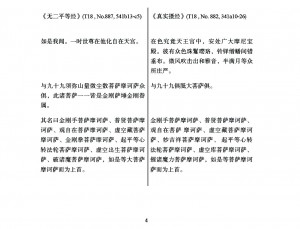Paṇḍita Kavirāja Saddharmarāja Bajrācārya Śāstrī (tr.) Ārya Mañjuśrī Nāmasaṅgīti: advayaparamārtha nāmasaṅgīti. Ācārya Vilāsavajra kṛta Nāmamantrārthaavalokinī Ārya Mañjuśrī Nāmasaṅgītiyāgu ṭīkāyā lidhaṃsāy, ṭippaṇī va bhāvārthasahita Nepālabhāṣāy saṅkṣipta anuvāda. Lalitapura: Rāmeśa Maharjana saparivāra, VS 2068 [2011 CE]. na+320 pp.
Rashtriya Skt Sansthan, Saṃskṛtanāṭyaviṃśatikā (2010)
Rashtriya Sanskrit Sansthan. Saṃskṛtanāṭyaviṃśatikā: Twenty best Sanskrit plays in performance. New Delhi: Rāṣṭriyasaṃskṛtasaṃsthānam, 2011(?). 20 videodiscs.
Contents: (1) Jāgarūko bhava (2) Sabhikadyūtakaram (3) Bhagavadajjukīyam (4) Karṇāsvatthāmīyam (5) Cārudattam (6) Campakarāmaḥ (7) Nāgānandam (8) Madhyamavyāyogaḥ (9) Mattavilāsaprahasanam (10) Svapnavāsavadattam (11) Hāsyacūḍāmaṇiprahasanam (12) Pratijñāśvatyāmīyam (13) Abhiṣekanāṭakam (14) Mālavikāgnimitram (15) Tripuradāhaḥ (16) Pañcakalyāṇī (17) Āścaryacūḍāmaṇiḥ (18) Sītācchāyam (19) Ekapātrābhinayaḥ (20) Kauravauravam [sic].

Delhey, Textual Sources of the Mañjuśriyamūlakalpa (2012)
Martin Delhey. ‘The Textual Sources of the Mañjuśriyamūlakalpa (Mañjuśrīmūlakalpa), With Special Reference to Its Early Nepalese Witness NGMPP A39/4′. Journal of the Nepal Research Centre* vol.14, 2012, pp.55–75. ISSN 2091-0401 [downloadable with restricted access at academia.edu].
Continue reading “Delhey, Textual Sources of the Mañjuśriyamūlakalpa (2012)”
Liu, On the Sanskrit Version of Dharmadhātustava (2012)
Zhen Liu (刘震). ‘On the Sanskrit Version of Dharmadhātustava‘. Paper presented at Buddhajayanti: The Celebration of 2600 Years of Buddha’s Enlightenment, Mahachulalongkorn University, Bangkok, 2012. [PDF]
Dr. Zhen Liu tracks down the earliest dateable source for the Dharmadhātustava — a Chinese translation of preaching attributed to Kṣitigarbha, surviving in a unique Dunhuang manuscript — and concludes: “it is obvious that before the middle of the eighth century it was not thought that Nāgārjuna authored the text” (p.10).
Continue reading “Liu, On the Sanskrit Version of Dharmadhātustava (2012)”
Tanaka, Samājasādhanavyavastholī 4 (2012)
Chandrasekhar, Pala-Period Buddha Images (2004)
Chandrasekhar, Chaya. Pāla-Period Buddha Images: their hands, hand gestures, and hand-held attributes. PhD Dissertation, Ohio State University, 2004. xvi+375 pp. [official site / PDF (779.3 MB)]
From the Abstract
This study identifies and classifies the Buddha images of the Pāla period (ca. eighth-twelfth centuries) of eastern India and Bangladesh. Specifically, the study examines the number of hands—whether a single pair or multiple pairs—hand gestures, and hand-held attributes of the Buddha images, and analyzes these elements in relation to the essential teachings of Mahāyāna and Vajrayāna Buddhism. […]
About 963 Buddha images among the known Pāla artistic corpus serve as the primary documents for the study.
Lee, Defining Buddhist art in Bengal (2009)
Lee, Eun-Su. On defining Buddhist art in Bengal: the Dhaka region. PhD Dissertation, University of Texas at Austin, May 2009. 498 pp. [official site / PDF (224.3 MB)]
From the Abstract
This dissertation addresses the significance of regional developments in Indian art, focusing on the Buddhist art tradition of the Dhaka region in East Bengal from approximately the seventh to twelfth century CE.

Pandey’s Siddham Script in Unicode proposal (2012/8)
Anshuman Pandey. ‘Proposal to Encode the Siddham Script in ISO/IEC 10646’.
ISO/IEC JTC1/SC2/WG2 N4294 L2/12-234R. PDF. 2012/08/01.
Mr. Pandey’s proposal – now no longer preliminary – promises to fill yet another gaping hole in the standard encoding of important Indic scripts. Now would be an appropriate time to comment, if you haven’t already commented.
(I would hope, at minimum, for the addition of a full set of ten digits in the final proposal. Often such basics fall through the gaps because the corpus of readily available primary material is so limited. Here‘s a nice “7-8th century” bilingual manuscript with a varṇamālā (no digits, though) which is both in good condition and readable online, thanks to the care of its Japanese custodians. Incidentally, this clearly confirms that two of the “Punctuation and ornaments” in Pandey’s Fig. 33 are ornamental final anusvāra [अं字].)
Comments should be emailed to Anshuman Pandey, whose address is given in the N4294 proposal (link above) and at the bottom of his personal website (link).

Hase, ‘Orissa: A Journey into Esoteric Buddhism’ (2012)
長谷 法寿 (編著) 河辺 利晴 (撮影) 『インド・オリッサ秘密佛教像巡礼』 柳原出版 12,000円+税 A4判変型
Hase, Hōju (ed.), Kawabe, Toshiharu (photography). Indo orissa: himitsu bukkyōzō junrei (Orissa, India: a Journey into Esoteric Buddhism and Its Iconography). Tokyo: Yanagihara Shuppan, April 2012 [official]. 286 pp. ISBN-13: 978-4840950244.
Fan, ‘Advayasamatāvijaya: the Sanskrit MS in Tibet’ (2011)
范慕尤 (作者) 《梵文写本《无二平等经》的对勘与研究》
梵文贝叶经与佛教文献系列丛书② 中西书局 2011.12Fan, Muyou. Advayasamatāvijaya: A Study Based upon the Sanskrit Manuscript Found in Tibet. Series of Sanskrit Manuscripts & Buddhist Literature 2. Shanghai: Zhongxi Book Company. 10+356+13 pp. 2011. ISBN 978-7-5475-0303-4. [English introduction]
(Via RISM)
Nice to see this new publication. Pardon me, though, if part of it seems just a little too familiar. Compare page 4ff of the front matter, on the parallels between the opening of the Advayasamatāvijaya (missing in Fan’s Sanskrit MS) and the STTS, presented as the author’s own work:
with the beginning of a document prepared for Dr. Fan in 2008:
Sincerely flattered, I am.




